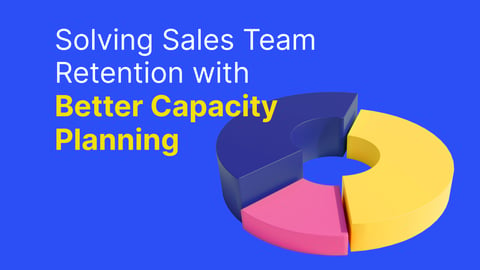Outbound programs are a great way to reach out to cold leads and re-engage leads from previous sales attempts. However, outbound programs create a challenge for both Marketing and Sales organizations in terms of how you measure success.
With inbound leads you have a clear direction of interest – they downloaded an ebook, signed up for a trial, or requested a demo. Some of the most meaningful metrics that impact conversion – like response time and pick-up rates – don’t apply to outbound programs.
With outbound programs, you’re facing an uphill battle. These leads can be from events, purchase lists, or sales attempts from the last couple of years:
-
They may not know who you are or what you do as an organization
-
They may not be in an active buying cycle or know they have the problem you solve
-
They aren’t expecting you, you’re interruptive
-
Your database may be out of date or incomplete
Because of this, you have to change how you measure programs. Below I want to cover the two methods I think give Marketing and Sales a full picture of outbound program success.
Sequence completion rate
Sequences, or cadences, are the steps your reps complete over time to engage a lead. For example, on day 1 they get an email, a call, and a voicemail. This can extend to multiple touches over time and is usually executed in a Sales Engagement Platform like Outreach or Salesloft. I cover this in more detail in my free book The Measurable Lead Model.
Sequence completion as a metric asks a few questions:
- When do people respond in the sequence? When do they opt out?
- When do reps stop the sequence (i.e. skipping steps, snoozing steps, overdue steps)?
- How many leads make it to the end of the sequence without a response? Are they being dispositioned (i.e. sent to nurture, marked as abandoned) automatically?
These are critical questions to answer. How can you say if the campaigns are good or bad if they aren’t treated equally?
Funnel disposition rates
There’s a wide array of outbound metrics you can measure, the question is how far down the funnel do you stop? If you’re in Marketing you may be inclined to stop at sequence completion. If you’re an SDR manager, you may be inclined to stop at activities. I think you need to go further.
Here are some metrics you can track and what they tell you:
- Activities completed: this is one of the most common metrics as its easiest to track, but it’s the highest level metric. It doesn’t tell you much. Is a high volume good, or is that rep doing spray-and-pray? Is a low volume bad, or is that rep personalizing content for high value accounts?
- Activity interaction: this is a fairly common marketing metric, i.e. emails opened. This doesn’t tell you much outside the effectiveness of subject lines.
- Activity responses: i.e. email reply, call answered. This is useful, but the disposition matters here. Was the response an out-of-office, an unsubscribe, call me in 6 months, or booking a demo?
- Meeting scheduled
- Meeting completed
- Pipe created
- Pipe won
Personally, we measure all campaigns off of meetings scheduled as its the earliest indicator of success. We use additional metrics to fine-tune messaging, as open rates and reply rates can be directional. But here’s the real question: would you rather have a 5% open rate, but those 5% of people are more likely to be qualified and book meetings with your team; or a 20% open rate and no meetings? The answer seems pretty clear, but you need to evaluate the full picture to answer it.
Compare your campaigns, segments, and sequences
This is where you need to slice-and-dice to figure out what’s working. Is the difference between trade show leads and a purchased list, or mid-market and enterprise?
I would recommend you segment by the week leads are added to sequence, and track the following metrics:
- # added to sequence by segment/campaign/etc.
- # completed sequence (include responses)
- % disposition to unqualified (never)
- % disposition to nurture (not now)
- % disposition to qualified (i.e. booked a meeting)
Make changes
Using these metrics can really drive your team forward in lead conversion from outbound programs. You’ll improve the quality of programming and the quality of execution. You’ll identify which segments are a fit and which aren’t. You’ll build stronger alignment with your team. And you’ll have a healthier funnel for it.




